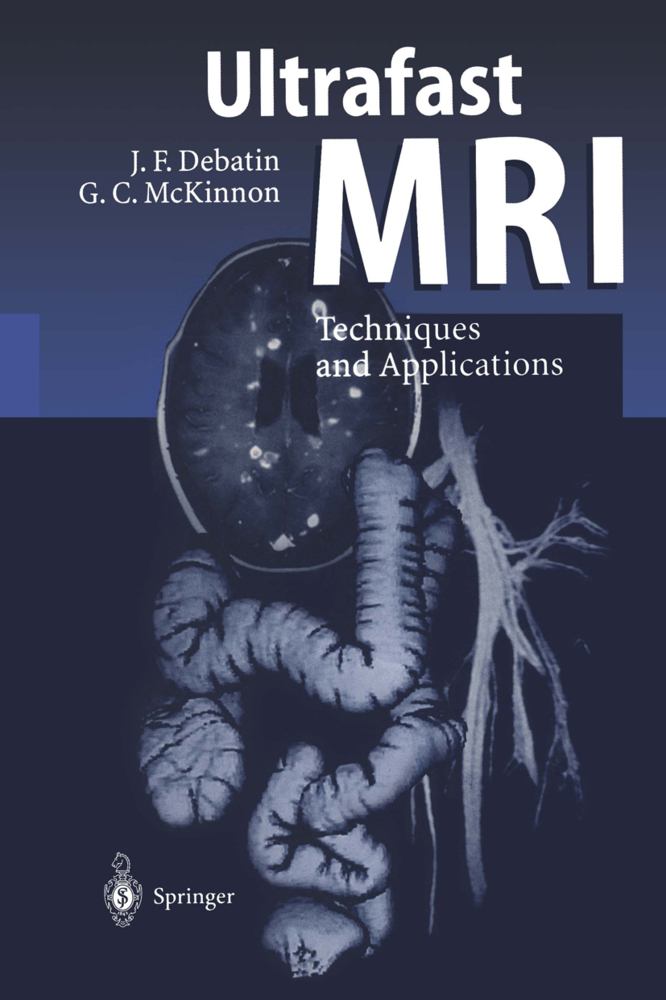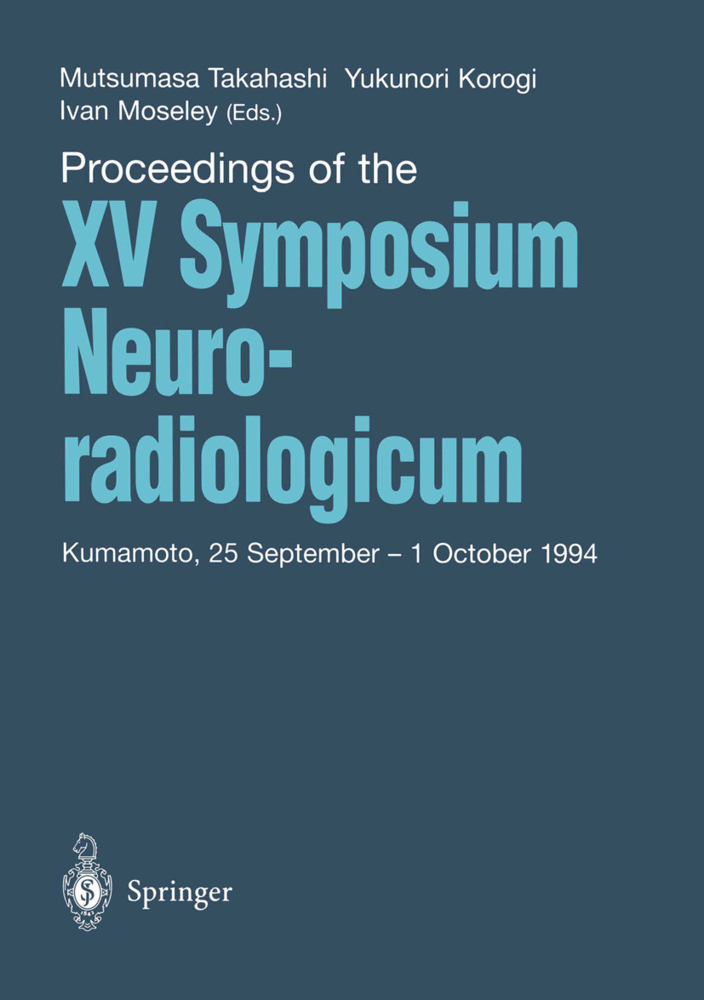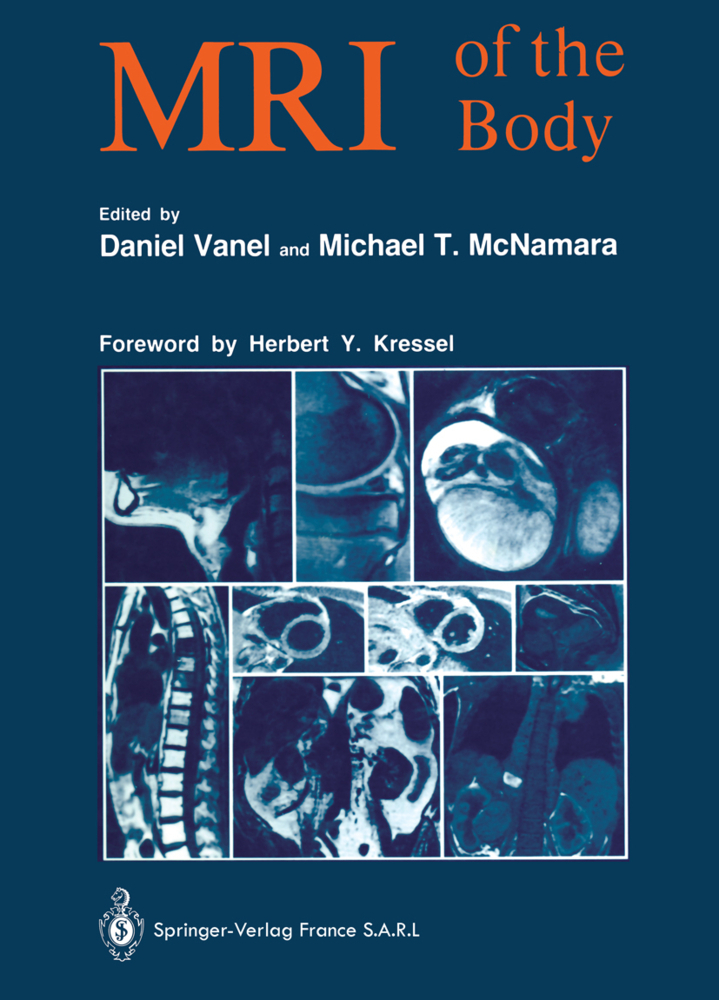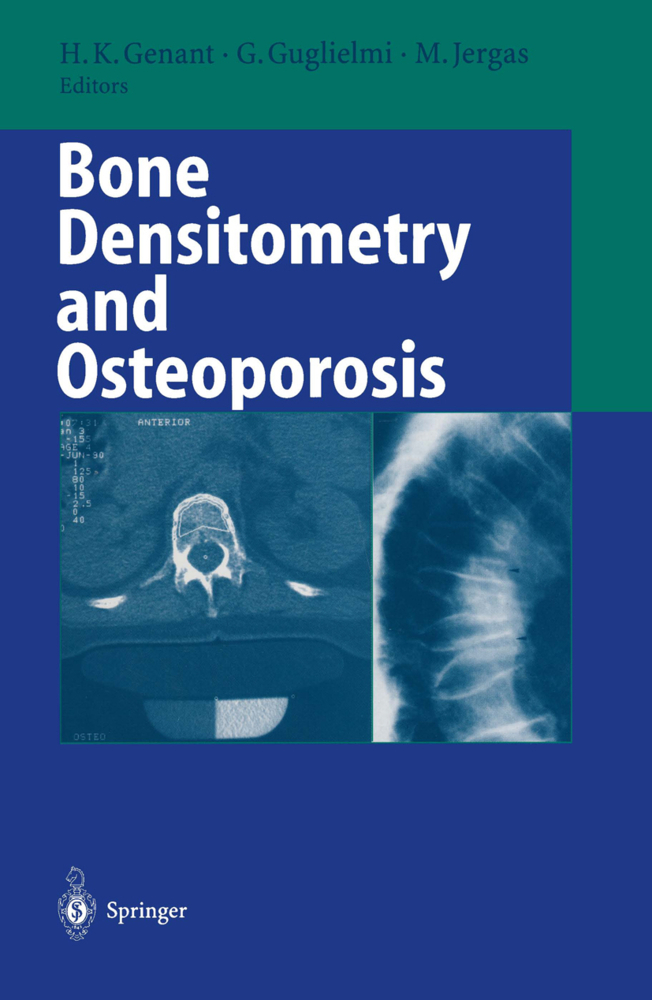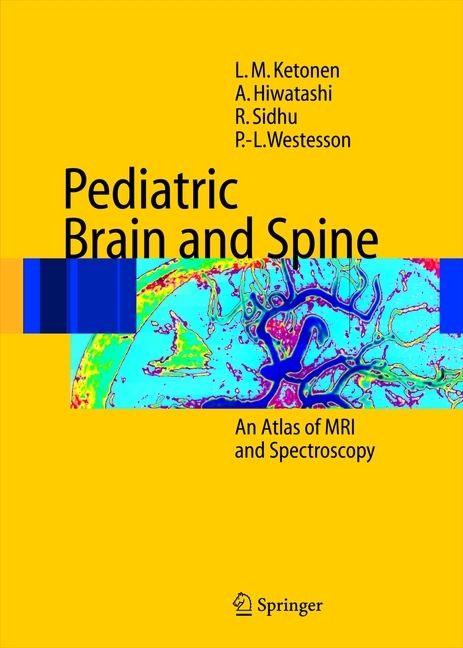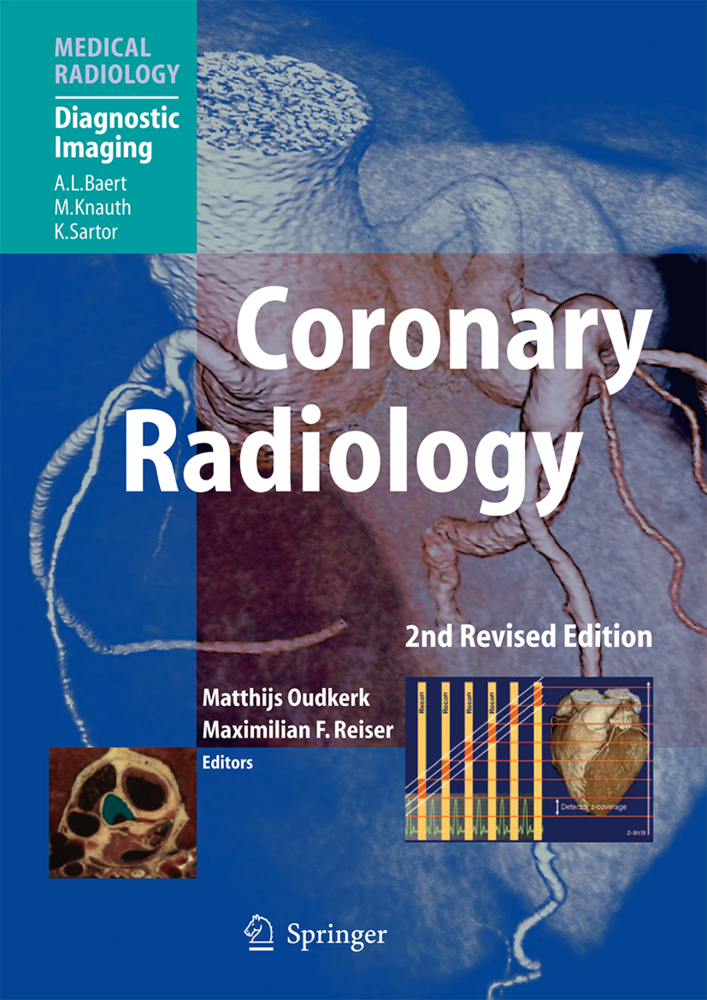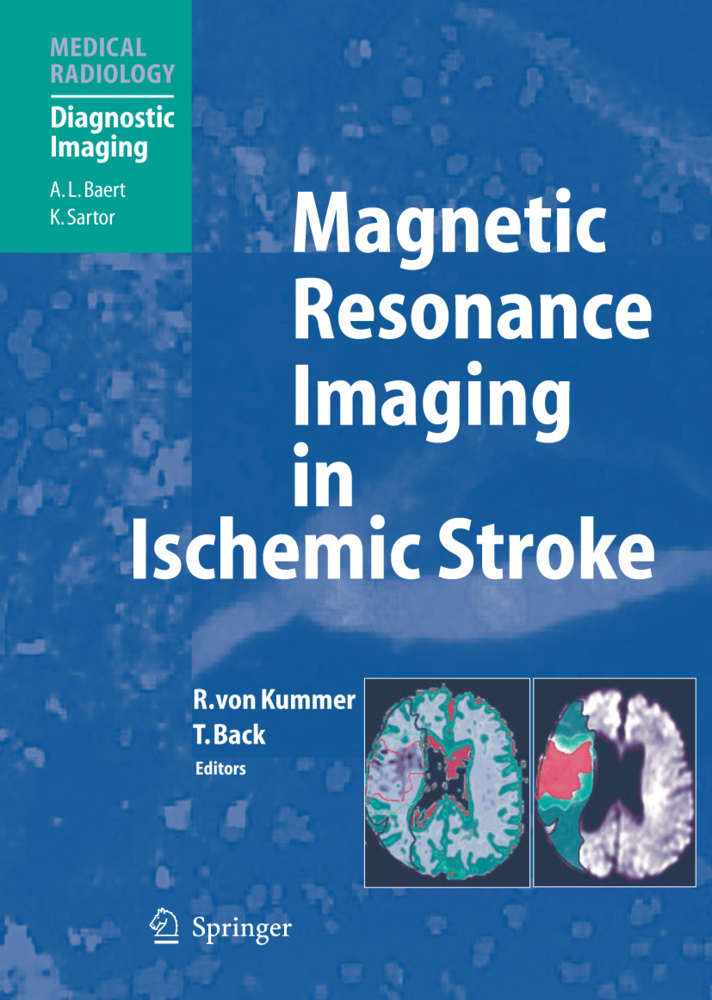Clinical MR Imaging
A Practical Approach
Magnetic resonance imaging (MRI) has become the leading cross-sectional imaging method in clinical practice. Continuous technical improvements have significantly broadened the scope of applications. At present, MR imaging is not only the most important diagnostic technique in neuroradiology and musculoskeletal radiology, but has also become an invaluable diagnostic tool for abdominal, pelvic, cardiac, breast and vascular imaging. This book offers practical guidelines for performing efficient and cost-effective MRI examinations in daily practice. The underlying idea is that, by adopting a practical protocol-based approach, the work-flow in a MRI unit can be streamlined and optimized. For the second edition, all chapters have been thoroughly reviewed, and new techniques and figures were included. This book will help beginners to advance their starting point in implementing the protocols and will aid more experienced users in updating their knowledge.
1;Foreword;5 2;Preface;6 3;Contents;7 4;List of Contributors;9 5;Abbreviations;13 6;Principles of Magnetic Resonance Imaging and Magnetic Resonance Angiography;15 6.1;1.1 Basic Principles of Magnetic Resonance Imaging;16 6.2;1.2 Magnetic Resonance Angiography, Techniques and Principles;50 6.3;1.3 Techniques in Cardiac Imaging;55 6.4;1.4 Artifacts in Magnetic Resonance Imaging;59 6.5;1.5 MR Safety;66 6.6;Further Reading;66 7;Contrast Agents for Magnetic Resonance Imaging;67 7.1;2.1 Introduction;67 7.2;2.2 Mechanism of Action;67 7.3;2.3 Extracellular Contrast Agents;69 7.4;2.4 Tissue- Specific Contrast Agents;72 7.5;2.5 Blood- Pool Agents;76 7.6;2.6 Gastrointestinal Contrast Agents;77 7.7;Further Reading;77 8;Haemorrhage;78 8.1;3.1 Introduction;78 8.2;3.2 Oxidation and Denaturation of Haemoglobin;78 8.3;3.3 Magnetic Properties in Haemorrhage;79 8.4;3.4 Relaxation Mechanisms;79 8.5;3.5 Evolving Parenchymal Haemorrhage;80 8.6;3.6 Sub- and Epidural Haemorrhage;85 8.7;3.7 Subarachnoid and Intraventricular Haemorrhage;85 8.8;3.8 Intratumoral Haemorrhage;85 8.9;3.9 Technical Considerations;85 8.10;Further Reading;89 9;Magnetic Resonance Imaging of the Brain;90 9.1;4.1 Coils and Positioning;91 9.2;4.2 Congenital Disorders and Hereditary Diseases;95 9.3;4.3 Mass Lesions;102 9.4;4.4 Supratentorial Brain Tumors;109 9.5;4.5 Infratentorial Tumors;114 9.6;4.6 Sella Turcica and Hypophysis;122 9.7;4.7 Cerebrovascular Disease;127 9.8;4.8 White Matter Lesions;140 9.9;4.9 Intracranial Infection;149 9.10;4.10 The Aging Brain;153 9.11;4.11 Craniocerebral Trauma;154 9.12;4.12 Seizures;155 9.13;Further Reading;159 9.14;Addendum. Classification of central nervous system tumors ( WHO Classification);159 10;Magnetic Resonance Imaging of the Spine;160 10.1;5.1 Patient Positioning and Coils;160 10.2;5.2 Sequence Protocol;162 10.3;5.3 Clinical Examples;174 10.4;Reference;185 10.5;Further Reading;185 11;Magnetic Resonance Imaging of the Head and Neck;186 11.1;6.1 Temporal Bone;187 11.2;6.2 Eye and Orbit;193 11.3;6.3 Paranasal Sinuses;198 11.4;6.4 Skull Base;206 11.5;6.5 Nasopharynx and Surrounding Deep Spaces and Parotid Glands;209 11.6;6.6 Oropharynx and Oral Cavity;213 11.7;6.7 Larynx and Hypopharynx;216 11.8;6.8 Temporomandibular Joint;217 11.9;Further Reading;221 12;Joints;223 12.1;7.1 Special Coils/ Planes/ Positioning;224 12.2;7.2 Sequence Protocols and Contrast Medium Application;224 12.3;7.3 Artifacts;227 12.4;7.4 Shoulder Joint;227 12.5;7.5 Elbow Joint;230 12.6;7.6 Wrist Joint;233 12.7;7.7 Sacroiliac Joints;234 12.8;7.8 Hip Joint;236 12.9;7.9 Knee Joint;238 12.10;7.10 Ankle and Foot Joints;244 12.11;Further Reading;248 13;Bone and Soft Tissues;249 13.1;8.1 Introduction and General Remarks;249 13.2;8.2 MR of Bone Marrow;252 13.3;8.3 Diseases of the Musculotendinous Unit;257 13.4;8.4 MR of Primary Bone Tumors;266 13.5;8.5 MR of Soft- Tissue Tumors;272 13.6;Further Reading;280 14;Upper Abdomen: Liver, Pancreas, Biliary System, and Spleen;282 14.1;9.1 General Clinical Indications;283 14.2;9.2 Coils;283 14.3;9.3 Pulse Sequences;283 14.4;9.4 Liver;285 14.5;9.5 Liver Pathology - Diffuse Liver Disease;288 14.6;9.6 Liver Pathology - Focal Liver Disease;296 14.7;9.7 Biliary System;312 14.8;9.8 Pancreas;315 14.9;9.9 Spleen;325 14.10;Further Reading;329 15;Kidneys and Adrenal Glands;330 15.1;10.1 MR Imaging of the Kidneys;330 15.2;10.2 MR Imaging of the Adrenal Glands;337 15.3;Further Reading;345 16;Pelvis;346 16.1;11.1 Patient Preparation, Positioning, and Coil Selection;346 16.2;11.2 Sequence Protocols;348 16.3;11.3 Clinical Applications of Pelvic MR Imaging;354 16.4;11.4 Pediatric Pelvic MR Imaging;374 16.5;Further Reading;374 17;Heart;376 17.1;12.1 Patient Preparation, Positioning, and Coil Selection;377 17.2;12.2 Sequence Protocols;380 17.3;12.3 Clinical Applications of Cardiac MR Imaging;383 17.4;Further Reading;407 18;Large Vessels and Peripheral Vessels;408 18.1;13.1 Introduction;408 18.2;13.2 MRA Techniques;409 18.3;13.3 Summary of Basic Advantages an
Reimer, Peter
Parizel, Paul M.
Stichnoth, Falko-Alexander
| ISBN | 9783540315551 |
|---|---|
| Artikelnummer | 9783540315551 |
| Medientyp | E-Book - PDF |
| Auflage | 2. Aufl. |
| Copyrightjahr | 2006 |
| Verlag | Springer-Verlag |
| Umfang | 597 Seiten |
| Kopierschutz | Digitales Wasserzeichen |

